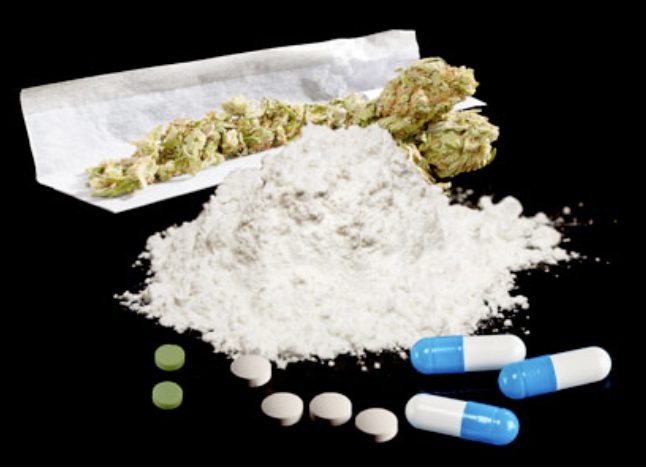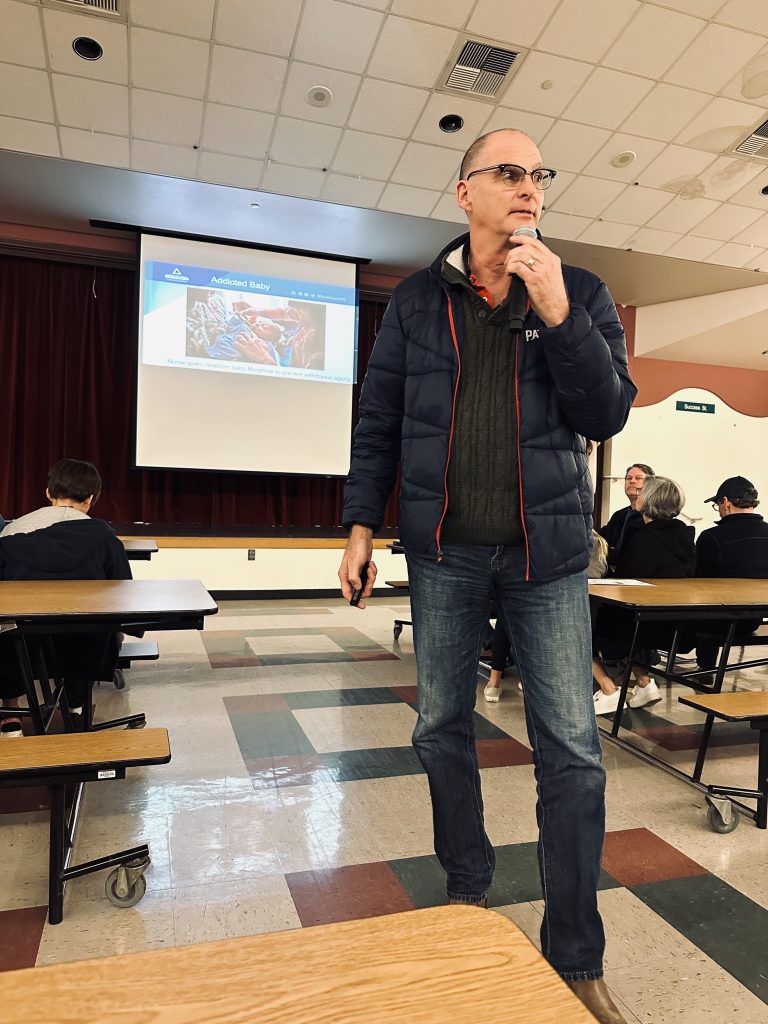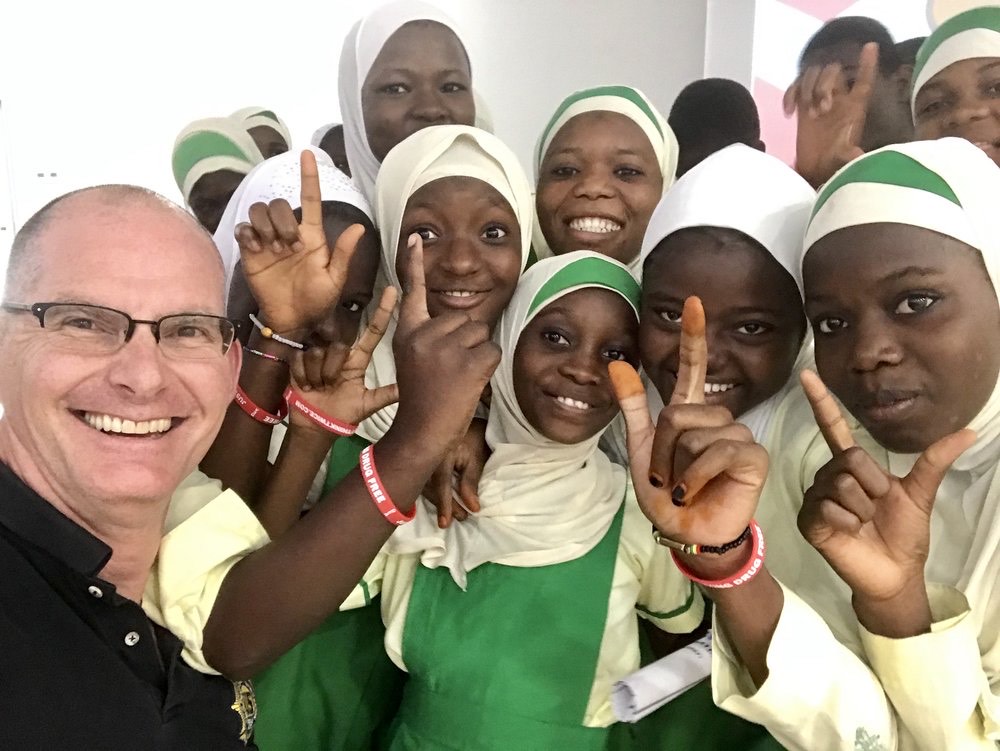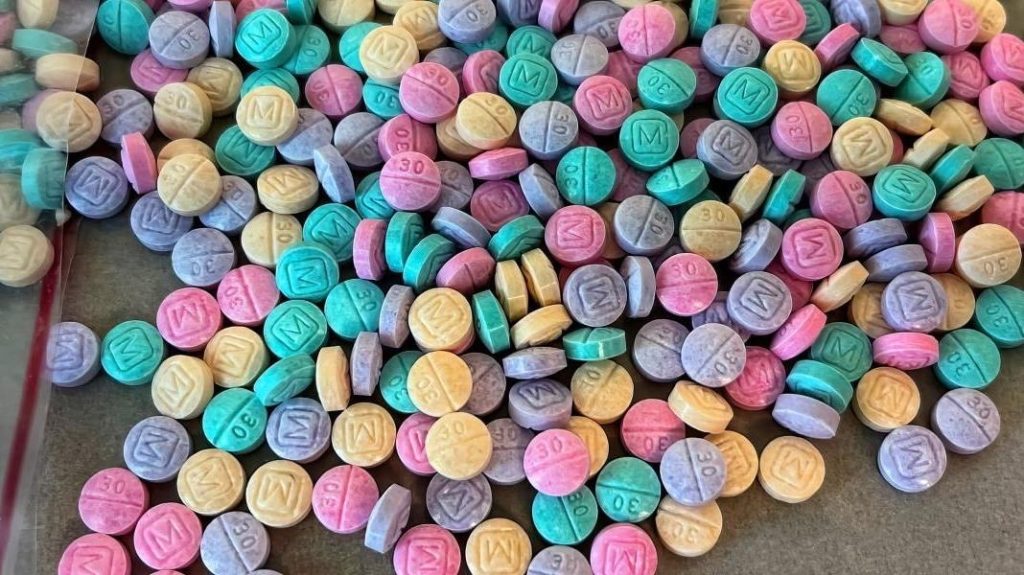Fentanyl is killing kids and it’s time for the Coronado community to do something about it, said former D.E.A. agent Rocky Herron when he spoke at Coronado Middle School on January 23rd. Herron said that kids need to understand the consequences of trying recreational drugs, because trying something—even once—can kill them.
“The age of recreational drug use is over,” said Herron, who now works for the San Diego County Office of Education as their Alcohol and Other Drug Ambassador. “But kids aren’t getting that message.”
Herron said that fentanyl—a synthetic opioid– is 50 times stronger than heroin and 100 times stronger than morphine. It can kill instantly, and it’s a major contributor to drug overdoses in the U.S. In California alone, more than 5700 people died from Fentanyl in 2021, according to the California Department of Public Health.
Fentanyl can appear in pill form, as candy, or as a liquid or a powder, according to the Centers for Disease Control and Prevention. Most people won’t know it when they see it. Sometimes, it’s made to look like a pharmaceutical drug like Oxycodone. Usually, it’s offered to kids by someone they know and trust.

“These drugs aren’t being offered by the ‘bad kid’ or the stranger,” said Herron. “It’s their best friend, or their boyfriend. It’s their girlfriend, their classmate, their teammate, their neighbor who comes up and says, ‘hey, look what I got, let’s do this.’”
Herron said that kids need to be prepared and understand what that choice means today. He said that 100% of the pills offered to kids at parties or sold on apps like Snap Chat are fakes from Mexico made from fentanyl. They’re not made by scientists; they’re made by drug traffickers. Some pills do nothing. Some can make you high. Some can kill you.
And they’re flooding across the border by the millions.
Yet many kids don’t understand. He said that sometimes it crosses the border in the form of powder. Kids often think it’s cocaine or meth, and they take it and they die.
“There’s a consequence, but there’s always a choice,” said Herron. “We need to make sure that every single kid understands the power of these choices. Completely.”

Herron, who attended Francis Parker High School and worked as a D.E.A. agent investigating drug trafficking for 31 years, has first-hand experience in the dangers of drug use. He’s taken down cocaine laboratories in Bolivia; he’s driven dozens of drug dealers to jail. He’s witnessed the violence that accompanies the drug trade and seen innocent people die. He scored his very first undercover bust straight out of the D.E.A. Academy posing as a San Diego State University fraternity guy and negotiating the purchase of 20 grams of cocaine.
The drug dealers were happy to sell it to him.
He said that he hopes his program, “I Choose My Future,” empowers kids to make good choices. He’s spoken to more than 170,000 students in 14 different countries.

“They are responsible for their happiness,” said Herron. “It’s not my dream they’re going to be ruining. It’s their dream.”
Sadly, American teens are particularly vulnerable to drug-induced harm. Part of it, according to Herron, has to do with the poor state of mental health in young people today. Herron said that he couldn’t think of a time in history when teens, as a generation, have had so many challenges. He said that lockdowns, economic fears, insane politics and social media are all damaging to kids, and he pointed to a survey from the Center for Disease Control which showed that 44% of kids feel persistently sad and hopeless.
“We are the richest country in the history of the world, and the most powerful, and almost half of our teenagers say they are persistently sad and hopeless,” said Herron. “How that didn’t cause a full-stop national crisis conversation I don’t know. But something’s wrong.”
He said that in the past, kids could get bullied at school, but at home, they were safe. In the digital age with iPhones and social media, kids can get bullied around the clock. Kids are now more sad, depressed and anxious than ever before. They can’t share it, or are unable to share it. This results in what Herron calls “the tragic moment.”
“Someone offers them a party drug, and they use it, and they discover that it works,” said Herron. “While they’re drunk or high, they aren’t feeling anxious or bullied. They are feeling strong, powerful, sexy, funny, or however they want to feel.”
Of course, the high never lasts.
“When the body clears all the toxins out, where’s the pain? Front and center again. Because you aren’t doing anything to improve your life when you’re high or drunk.”
Not only does drug use harm the individual, but it hurts those around them. Even in other countries.
“This is our problem,” said Herron. “It’s not Mexico’s problem. It’s not China or Colombia’s problem, but we’re blaming them. The money to build the cocaine factories is coming from the pockets of American drug users. American drug users are financing all the violence.”
He said that the USA is the biggest drug-consuming nation in the world. Herron said that while San Diego is one of the safest big cities in America, our neighbors to the south, in Tijuana, have to live in the most violent city on the planet. Herron blames the billions of American dollars funneling down to Tijuana to pay for illegal drugs.
“I’m a proud American, but I’m ashamed of us too,” said Herron. “Our appetite for illegal drugs is corrupting societies around the world, not just our own. When do we take ownership for the violence we are paying for when we buy the drugs?”
But Herron said that one of the hardest parts of his job isn’t talking about Fentanyl. It’s convincing California school kids that today’s marijuana is dangerous in a state that has legalized its use.
“People say, it’s just this herbal thing, it’s just weed,” said Herron. “But it’s hurting our kids. The worse case scenario is teenagers go psychotic from THC. They jump off buildings and run into traffic.”
But even if the situation isn’t as severe, science shows that marijuana harms brain development. According to Herron, between the ages of 11 and 25, the human brain goes through its biggest rate of growth. What science shows repeatedly is that kids who use drugs or alcohol during these formative years will change how their brain works. He shared an image that showed areas of the brain that suffer from diminished blood flow because of the presence of marijuana. Those areas, he said, stop growing.
“Marijuana sold today is very different than the natural plant,” said Herron. “In 1980 it was 4% THC. Now, it’s 25%.”
In the DSM-5, the Diagnostic and Statistical Manual of Mental Disorders, psychologists recognize marijuana as an addictive substance, yet the industry is silent. Herron says that marijuana use by mother or father can lead to big problems to unborn children, including being born with disabilities.
“People have convinced themselves that they aren’t hurting themselves by smoking marijuana,” said Herron. “They have convinced themselves that the question is stupid.”
He encouraged teens and parents to Google “teen brains and marijuana” and see for themselves.
While Herron says that while the majority of kids don’t use drugs, they are silent. He said that he hoped that educational talks, like the ones he does for the district, would empower these kids with information and help them speak up.
When Herron started his career in 1990, about 10,000 people a year were dying from drug overdoses in the U.S.
Now, the number is 107,000.
“I need our society to care,” said Herron. “We still don’t. I keep asking myself, how much worse can it get, when our society will say ‘enough?’ I stopped asking myself that question.”
According to Niamh Foley, Director of Student Services with CUSD, Herron will present his talk to Coronado High School students in the next few months. Safe Harbor will present a workshop called “How to Talk to Your Kids about Drugs” at CMS on March 13th at 6pm.





